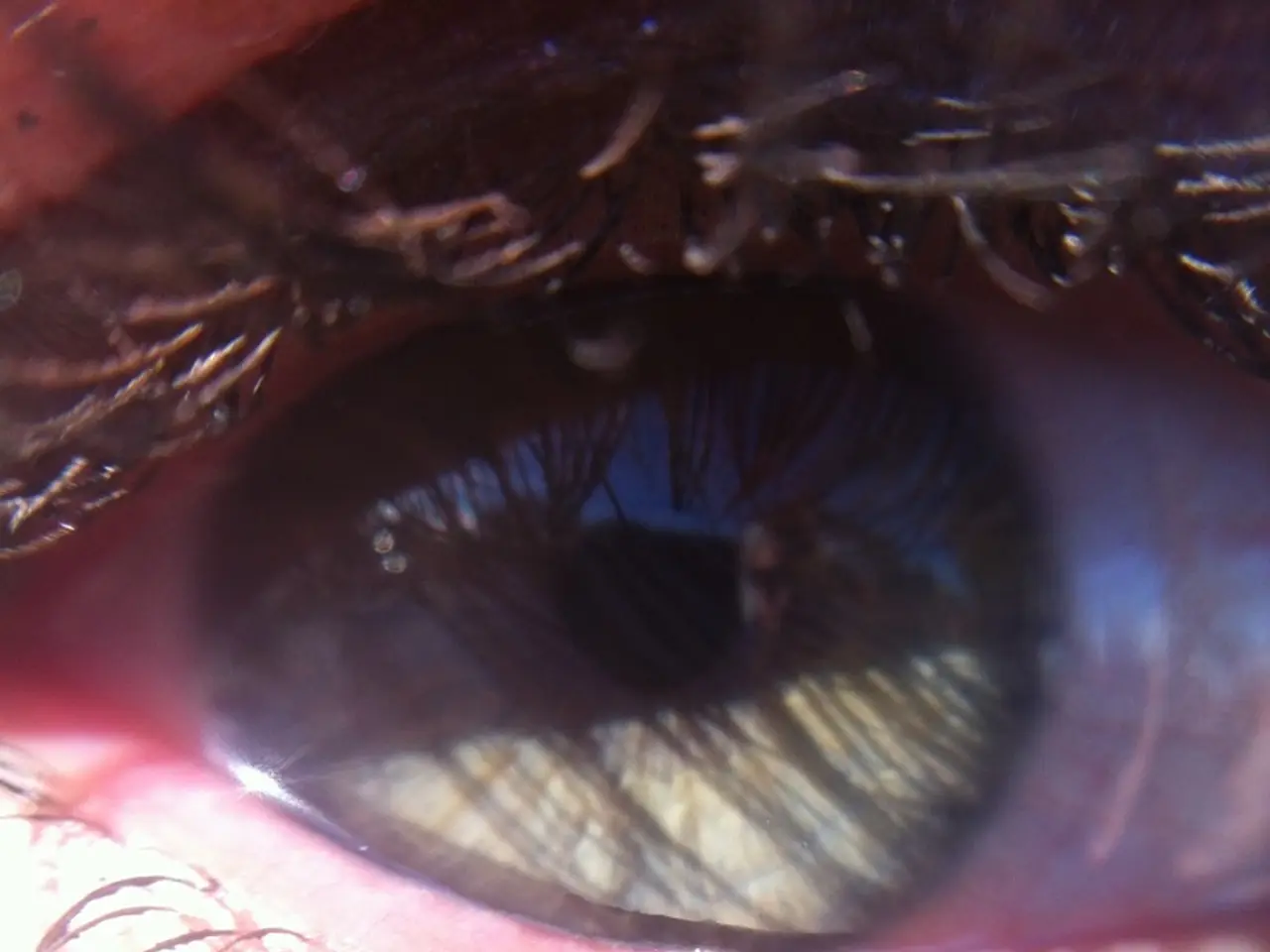Remedy for Persistent Dry Eye Condition: Exploring 9 Potential Solutions
Managing Dry Eye Disease: A Multifaceted Approach
Dry eye disease, also known as keratoconjunctivitis sicca, is a common condition that affects the eyes' ability to stay wet. This condition can cause discomfort and vision problems, but thankfully, there are various treatments available to help manage the symptoms.
Dry eye disease occurs when the tear film, which protects and lubricates the eyes, is not functioning optimally. The tear film consists of three layers: an outer oily layer, a middle watery layer, and an inner sticky layer. In some cases, surgery to tighten the lower eyelids and help the eyes retain tears may be suggested, but more commonly, treatments such as eye drops, warm compresses, and moisturizing gels or ointments are used.
Artificial tear solutions are common eye drops that people can buy over the counter (OTC) without a prescription. These eye drops can provide immediate relief from dry eye symptoms. However, long-term management requires a more comprehensive approach.
According to recent research, successful long-term management of dry eye disease requires a multimodal approach combining lifestyle optimization, sustained therapies targeting eyelid health and inflammation, nutritional support, and, where needed, advanced medical or surgical interventions.
Lifestyle and Environmental Modifications
Reducing screen time, improving hydration, modifying diet (especially increasing omega-3 fatty acids), avoiding dry or smoky environments, managing contact lens use, and addressing systemic health factors can significantly reduce dry eye symptoms day-to-day.
Eyelid Hygiene and Gland Treatments
Regular warm compresses, lid scrubs, in-office therapies like thermal expression, exfoliation, and intense pulsed light (IPL) help treat meibomian gland dysfunction, a common cause of evaporative dry eye.
Prescription Medications
Anti-inflammatory eye drops such as cyclosporine (Restasis®), lifitegrast (Xiidra®), and newer agents like Tyrvaya® nasal spray improve tear production and reduce ocular surface inflammation, typically used long-term for chronic cases.
Tear Retention Devices
Punctal plugs are small plugs inserted into tear ducts to reduce tear drainage and increase surface moisture, offering sustained relief.
Nutritional Supplementation
Consuming omega-3 fatty acids and addressing other nutritional deficiencies can improve tear quality and ocular surface health.
Advanced Therapies and Surgical Options
More severe or refractory cases may benefit from blood-based treatments (such as autologous serum eye drops), amniotic membrane applications, salivary gland transplantation, and lacrimal gland reinnervation, as well as surgical correction of anatomical abnormalities like pterygium or pinguecula.
Comprehensive, Personalized Care
Ongoing monitoring with advanced diagnostics (meibography, tear osmolarity testing) and individualized treatment plans involving clinicians experienced in dry eye management are essential for durable control.
Dry eye disease is more common in older adults, affecting roughly 4.88 million people 50 years and over in the United States, with over 3.2 million being females and 1.68 million being males. However, it can occur at any age, with nearly U.S. individuals having dry eye. Home remedies for dry eye include using a humidifier, drinking plenty of water, getting enough sleep, and reducing screen time.
In addition to these measures, the LipiFlow Thermal Pulsation System, a device that helps unclog the oil glands in the eyes, can be beneficial. Castor oil can also help treat dry eyes by reducing inflammation, swelling, itching, and redness. Punctal plugs can help relieve dry eye by keeping tears in the eye for longer, and prescription eye drops like cyclosporine (Restasis, Cequa) or lifitegrast (Xiidra) can help increase tear production.
Doctors may recommend or prescribe different treatments for dry eye disease depending on the underlying cause or causes and the severity of the symptoms. Regularly cleaning a person's eyelids with baby soap and water can also help relieve dry eye symptoms.
- Predictive analysis in medical-health fields can help establish effective strategies for managing dry eye disease.
- Treatment for dry eye disease doesn't always require surgery; eye drops, warm compresses, and moisturizing gels are common options.
- Bipolar disorder is one of the medical-conditions that can cause dry eyes due to its impact on tear production.
- Obesity has been linked to a higher risk of developing dry eye disease, due to hormonal imbalances and systemic inflammation.
- PSA (Prostate- Specific Antigen) levels don't typically impact dry eye disease, but will be closely monitored for general health-and-wellness purposes.
- MM (Multiple Myeloma) treatment plans may require modifications for patients experiencing dry eye symptoms.
- Diabetes can exacerbate dry eye disease, as high blood sugar levels interfere with tear production and eye-health overall.
- Seekers suffering from dry eye disease can benefit from consulting with professional treaters specialized in managing the condition.
- COPD (Chronic Obstructive Pulmonary Disease) medications may contribute to dry eye symptoms, prompting the need for alternative treatment methods.
- Spondylitis patients should be mindful of dry eye symptoms, as inflammation in the spine can affect other joints, including the eyes.
- MS (Multiple Sclerosis) medications can cause dry eye side effects, necessitating regular eye-health assessments and possible intervention.
- Ankylosing Spondylitis treatment plans may need to account for potential dry eye symptoms, as the condition affects more than the spine.
- Psoriatic arthritis can lead to dry eye disease due to inflammation in the body, so early diagnosis and treatment are essential.
- Depression and dry eye disease may be linked, with symptoms such as dry eyes perpetuating further feelings of sadness or discomfort.
- Arthritis and dry eye disease often coexist due to shared autoimmune and inflammatory mechanisms.
- Switchers between different asthma medications may experience dry eye side effects, so alternative treatments may be necessary.
- Persons affected by dry eye disease often encounter droplets or eye discomfort during daily activities (like working on a computer) and may benefit from eye-health-focused practices like blinking more frequently.




